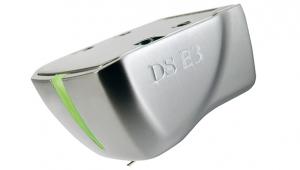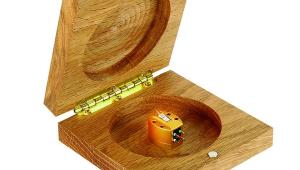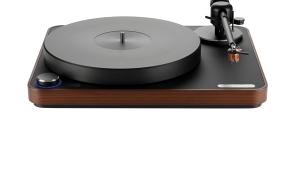Sumiko Starling Cartridge

 One-time distributor of Grace, Kiseki, Supex and other brands from the vinyl vault, Sumiko is also a manufacturer with a legacy. Here's its new open-bodied MC flagship
One-time distributor of Grace, Kiseki, Supex and other brands from the vinyl vault, Sumiko is also a manufacturer with a legacy. Here's its new open-bodied MC flagship
One testament to the continuing love for vinyl is that the steady trickle of brand new cartridges making their way onto the market shows no sign of abating. The latest company to pep up the party is US-based distributor and manufacturer Sumiko.
To begin with, it has introduced a range of four new moving-magnet designs in the form of the Rainier, Olympia, Moonstone and Amethyst. Costing £160, £225, £325 and £625 respectively, these are positioned in the main at the more affordable end of the market. However, to whet the whistle of vinylistas with greater means, it has also debuted two new moving-coil designs in the form of the £899 Songbird and £2099 Starling we have on test here.
Sumiko has been making cartridges for around 40 years and, although a US company, it has sourced its models from the same Japanese factory all that time. Its affordable MM designs have earned a reputation as being consistent performers while the sensibly-priced Blue Point MCs have been reliable go-tos for a number of years now. The hitch was that there were a couple of gaps in the Sumiko range that needed to be filled.
Built For Business
With the latest and highly-regarded version of the Blue Point Special Evo III retailing for £599 [HFN Mar '11], there was something of a hop and a skip to the next model in the range – the Blackbird [HFN Nov '13] at £1399. A fairly enthusiastic leap was then required to reach the most expensive models in the series – the £3499 Pearwood Celebration II and flagship Palo Santos Presentation [HFN Jul '10] at £5000 with its rosewood body and line-contact stylus.
But back to the Starling which, like the Songbird and Blackbird, features an exposed generator assembly. This can pay big dividends when it comes to both mass reduction and resonance optimisation while it also lends the cartridge a business-like, if not high-tech, appearance.
Naked Truth
The downsides to this arrangement are that not only is a naked assembly prone to attracting dust, but care and a steady pair of hands are needed when fitting the pick-up to the arm, or damage can easily occur.

Both models are based around a milled aluminium alloy top plate but differ in their cantilever materials and stylus configuration. Also, while the Songbird is available in both high (2.5mV) and low output flavours only a single, low-output version of the Starling is offered.
As one might expect given that the Starling is Sumiko's flagship open-bodied cartridge, a good deal of technology lurks within its minimalist frame. The coils are configured in an 'X' arrangement and are connected to a boron cantilever with 'Micro-Ridge' stylus. The suspension of the stylus assembly is based around a synthetic rubber material said to ensure that the cartridge's compliance will be better controlled in different climates and over years of use. What this promises for the end-user is a pick-up that should meet its original specification for longer and even extend the product's lifespan – within the constraints of total playing time and wear and tear on the stylus, of course.
The Starling is supplied in a very stylish wooden box complete with mounting hardware and comes ensconced in a very sturdy protective plastic guard. The user manual, downloaded from Sumiko's website, is no less than 15 pages long and is an absolute masterclass in everything a manual should be. After providing some explanation of the design ethos behind the cartridge it then sets aside the ten pages that follow to guiding the owner through both installation and set-up in order to ensure that optimum performance can be achieved.
![]() Right On Track
Right On Track
Duly adhering to the guidelines set out in the manual, I initially installed the cartridge into my SME 309 arm. The Starling mounts from above via threaded holes in its top plate, but I was still thankful for the SME's removable headshell on this occasion. One other thing to note is that the cartridge connection pins, with their chamfered edges, seem a little smaller than usual –
























































